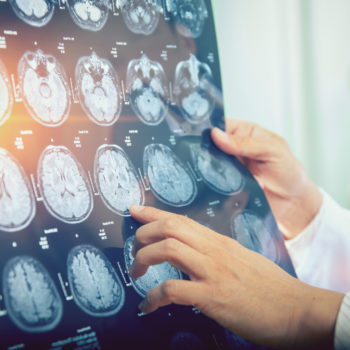When you sleep, your eyes are closed but do not stand still. In one of the sleep phases, in fact, the REM phase, eye movements are fast and frequent. The word REM is formed by the initials of the words “rapid eye movement”, but its peculiarities do not end here: “This phase is also characterized by atony, that is muscular paralysis, and by a lively cerebral activity. This is the moment when you dream,” adds Dr. Lara Fratticci, a neurologist at Humanitas.
REM: when does it occur and how long does it last
Sleep is not an irregular but a periodic process. It is formed, in fact, by the alternation of REM and non-REM sleep phases after waking: “This alternation occurs every 90-120 minutes. The REM sleep starts about 70-90 minutes after falling asleep and is initially shorter, in its first phase, then prolonged in a second phase”, recalls Dr. Fratticci. The REM phase occupies up to a quarter of sleep time, “recurring five times during the night, with the remaining 20-25% deep sleep and 50% of light sleep”. Finally, this is the phase in which one rests and recovers one’s energy.
What happens during the REM phase
In addition to ocular movement, this is the phase in which a certain metabolic and cognitive activity is recorded: “For this reason, the REM phase is also called” paradoxical sleep”. The brain, unlike the non-REM phase, is in fact metabolically active although its operation does not depend on external stimuli. Due to these more active metabolic processes you dream and dreams are often vivid.
Another typical characteristic of REM sleep is atony, or muscle paralysis: “Despite the activity of the motor cortex, stimuli do not translate into muscle movements”. This activity was the focus of a recent study by the Niguarda Hospital in Milan published in the Annals of Neurology: “Researchers saw that the motor cortex had a similar activity to that observed during wakefulness. This is particularly the case whilst dreaming, when eye movements are very intense,” the specialist remembers.
REM phase disturbances
All these characteristics are those of a physiological REM sleep. When sleep disorders arise, on the other hand, the features of the REM phase are demolished: “The most common disorder is the REM behavior disorder, the behavioral disturbance of the REM sleep. In patients who present it, the muscular atony is no longer present and therefore sleep is agitated, the individual moves, “lives” his dreams in a very intense way, especially in the early hours of the morning”.
Sleep can also be an indication for other possible clinical conditions: “REM phase disorders are also related to dementia and neurological disorders such as Parkinson’s disease. With an instrumental examination, such as polysomnography, it is possible to detect these variations within the clinical investigations for the diagnosis of a neurodegenerative disorder,” concludes Dr. Fratticci. A recent study by Swinburne University in Australia published on Neurology suggested a possible association between the shorter duration of the REM phase with a higher probability of developing dementia without however identifying a causal relationship between these two elements.








